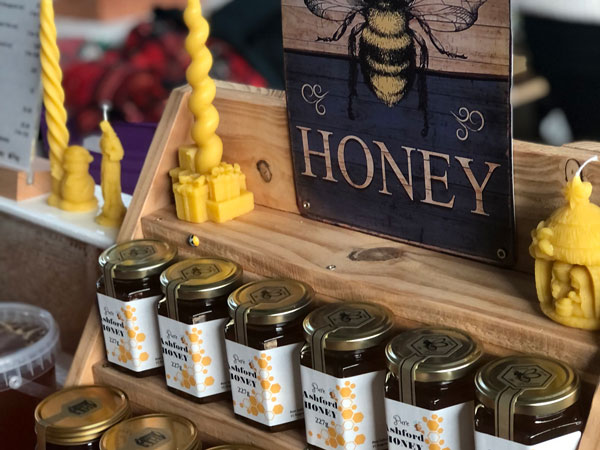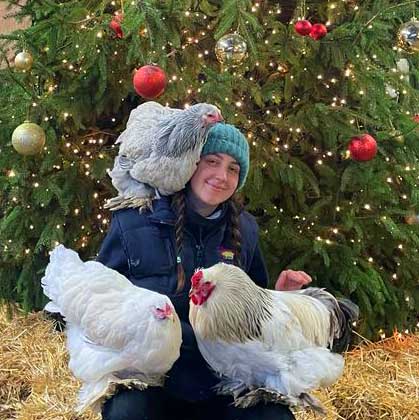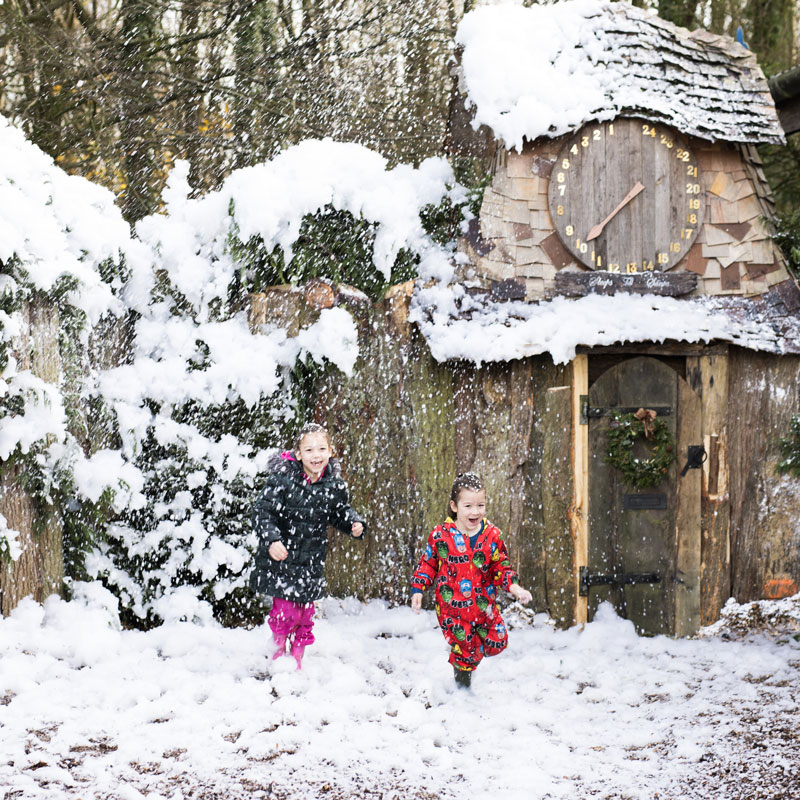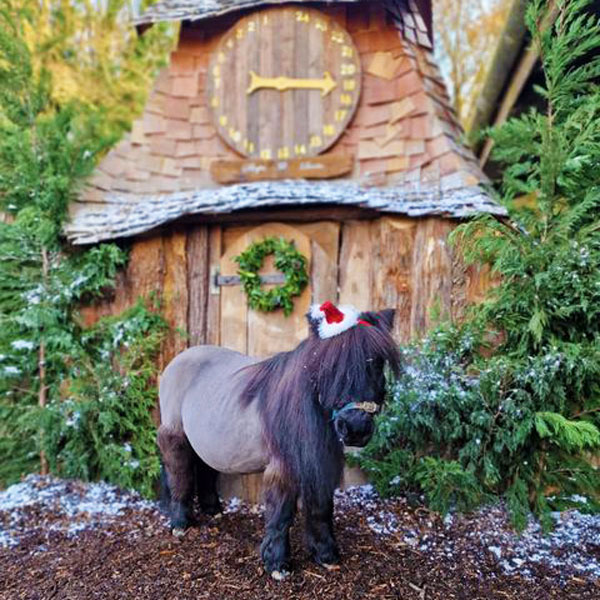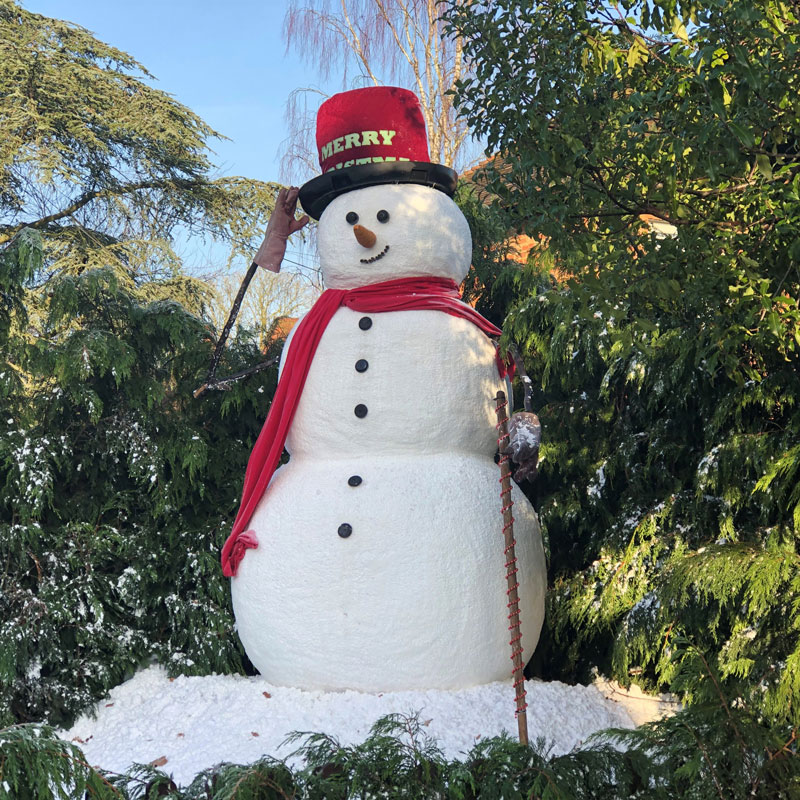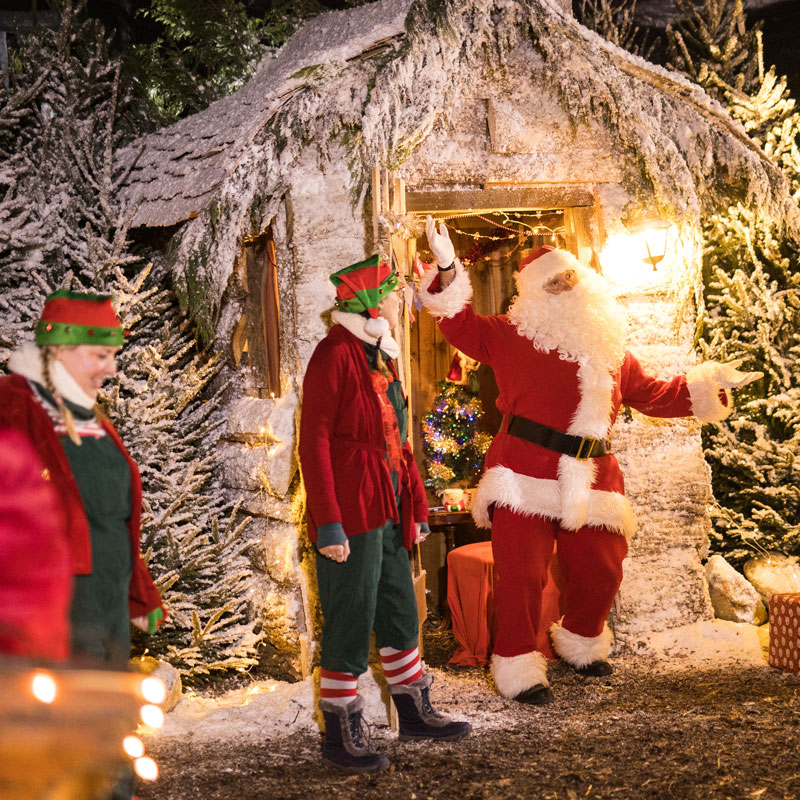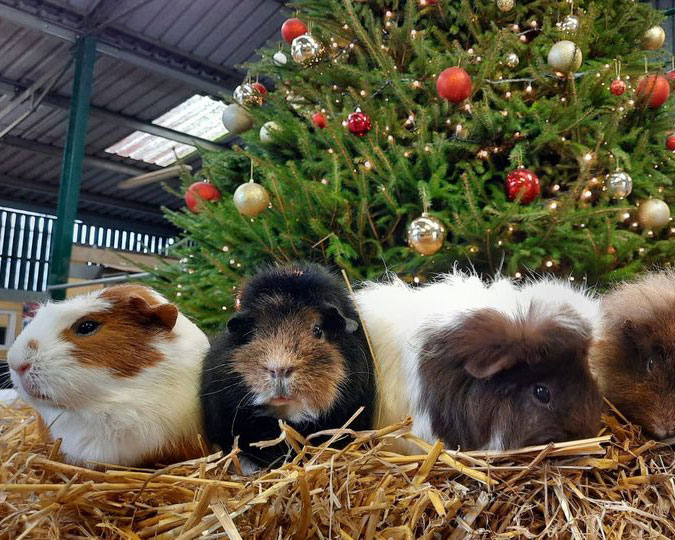Over £1,000 in Prizes Donated to Support 40th Anniversary Accessibility Fundraiser
In celebration of our 40th anniversary, we’re launching a special fundraising raffle in support of our ambitious accessibility expansion campaign aimed at making the Rare Breeds Centre welcoming and inclusive for visitors of all abilities. To help reach this goal, nine generous local businesses and individuals have donated over £1,000 worth of prizes.
One lucky winner will take home the entire prize bundle of experiences and luxury products.
The prize package includes |
|---|
| An exclusive 45-minute scenic flight over Kent for up to 2 people |
| A beautiful fine wool Margo Selby scarf – light-weight and elegantly designed |
| Flackley Ash Country House Hotel health club day pass for 2 |
| A £50 meal voucher for The Woolpack Inn, Warehorne, a charming 16th-century inn |
| Harry Baker live performance tickets for 2 in London, plus a signed book from the world poetry slam champion |
| 2 bottles of Greensand Ridge London Dry Gin from Kent’s award-winning distillery |
| 18 holes of golf for 4 at Chart Hills Golf Club, a championship course designed by Sir Nick Faldo |
| 3 cases (36 bottles) of International Wine Challenge-winning wines, a mix of reds and whites |
| A sparkling wine flight tasting at Gusbourne Wines, 3-time winner of the IWSC English Wine Producer of the Year |
The grand prize winner will be announced live at our Christmas Grotto on 23rd December 2025 at 6:45 pm.
Supporting accessibility for everyone
Funds raised through this raffle will directly support our farm accessibility plan, which aims to make our entire site welcoming and inclusive for visitors with a wide variety of disabilities. Through these initiatives, COT aims to create an inclusive environment where everyone can explore, play, and connect regardless of ability.
Community Support and Thanks
Huge thanks and deep gratitude to the businesses and individuals who have contributed prizes to the raffle. Their generosity reflects the strong community spirit that has supported the organisation throughout its 40-year history.
- Margo Selby
- Flackley Ash Hotel
- The Woolpack Inn, Warehorne
- Harry Baker
- Greensand Ridge Distillery
- Chart Hills Golf Club
- International Wine Challenge
- Gusbourne Wines
Purchasing raffle tickets
This raffle is hybrid. Tickets can be purchased online and in person for £4 each or 5 for £16 (a 20% savings). Traditional raffle tickets can be purchased from our gift shop at the Rare Breeds Centre during regular operating hours. Or you can click the button below to purchase online:
Celebrate this Christmas season on our farm
Our Christmas Gift Market kicks off the season
Christmas is almost here, and the Rare Breeds Centre is ready to wrap the farm in sparkle and cheer! We’re starting the celebrations with our festive Gift Market, open Saturday 15th and Sunday 16th November.
Discover the perfect presents
Step into our festively decorated Benson Barn, brimming with handcrafted gifts, local produce, toys, and artisan treats. It’s the perfect place to find something special for everyone on your list. As you explore, sip on a warm mulled wine or enjoy a freshly baked mince pie and let the holiday spirit fill the air.
Magical moments for children
Little visitors can send their Christmas wishes straight to the North Pole by posting a letter in our magical post box at the market. Heading into the farm? Pop into the Discovery Zone, where special stationery will be available for children to write their letters before sending them off to Father Christmas. Parents: remember to add an email address so Santa can reply!
Free entry to the market
There’s no charge to visit the Christmas Gift Market. Enjoy browsing the stalls and soaking up the festive atmosphere without any entry or parking fees. If you’d like to make a full day of it, regular farm day tickets are available so you can continue the family fun with our friendly animals and play areas. When you’re ready for refreshments, enjoy hot drinks and seasonal treats at the Granary Restaurant.
Whether you’re shopping for unique gifts or simply making holiday memories together, our festive gift market promises a joyful start to the Christmas season filled with charm, creativity, and plenty of sparkle! Click the button below for more details and to see a list of this year’s stallholders:
A Christmas adventure awaits in Santa’s grotto

The celebrations continue as Santa’s Grotto opens its doors on Saturday, November 22nd, welcoming families every weekend until Christmas! For those hoping to see Santa before he begins his big journey, he’ll also be greeting visitors from Monday 22nd to Wednesday 24th December for those final, magical meet-and-greets.
The farm becomes a festive wonderland
From the moment you arrive, you’ll be surrounded by Christmas magic. Santa’s elves will have been hard at work transforming the farm into a sparkling wonderland, complete with lights, decorations, and the warm glow of the season across every corner.
Meet Father Christmas and his jolly helpers
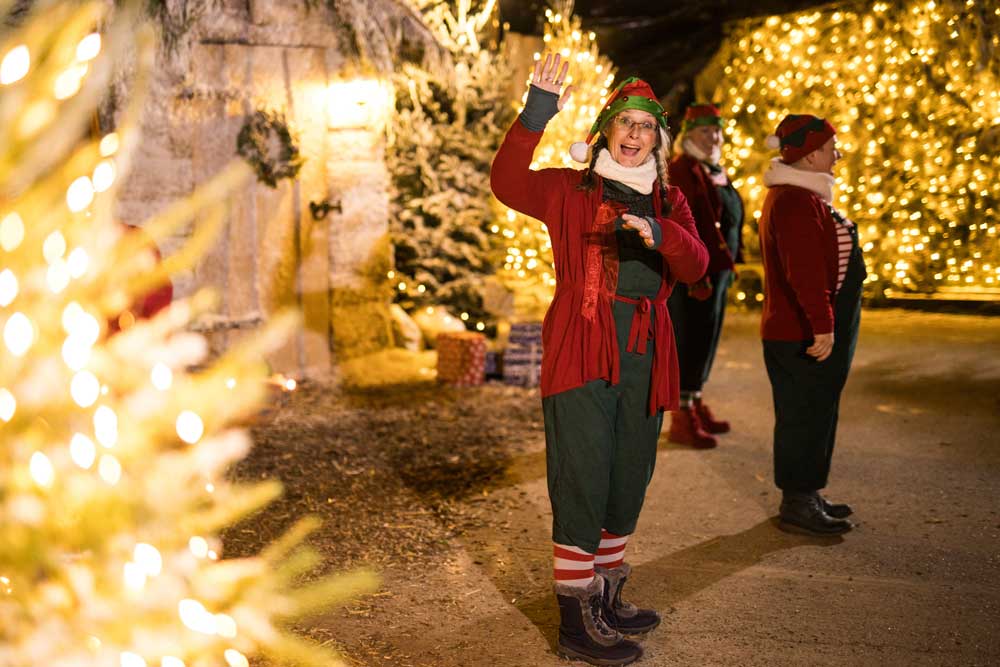
Our cattle barn will become a glittering grotto. Here, families can watch live festive shows starring Father Christmas and his merry band of elves. And just outside, our snow machine will create a magical winter wonderland. In the Children’s Barn, the twinkling decorations and magnificent Christmas tree create the perfect backdrop for your family photos.
Activities for the whole family
Every grotto ticket includes a full day of farm fun. Plus, enjoy Christmas craft sessions in the Discovery Zone and a 12 Days of Christmas Letter Trail for young adventurers to explore. There’s something magical around every corner, like planting your own Christmas tree, making a festive day out the whole family will remember.
Capture the moment
A professional photographer will be on hand to take beautiful keepsake photos of your child’s special time with Santa. But you’re also very welcome to snap your own pictures too!
SEN-friendly visits
We’re pleased to offer quiet sessions designed especially for children and families who prefer a calmer, less crowded experience. These SEN-friendly grotto visits feature fewer guests, softer lighting, and a relaxed pace.
Seasonal flavours at the Granary
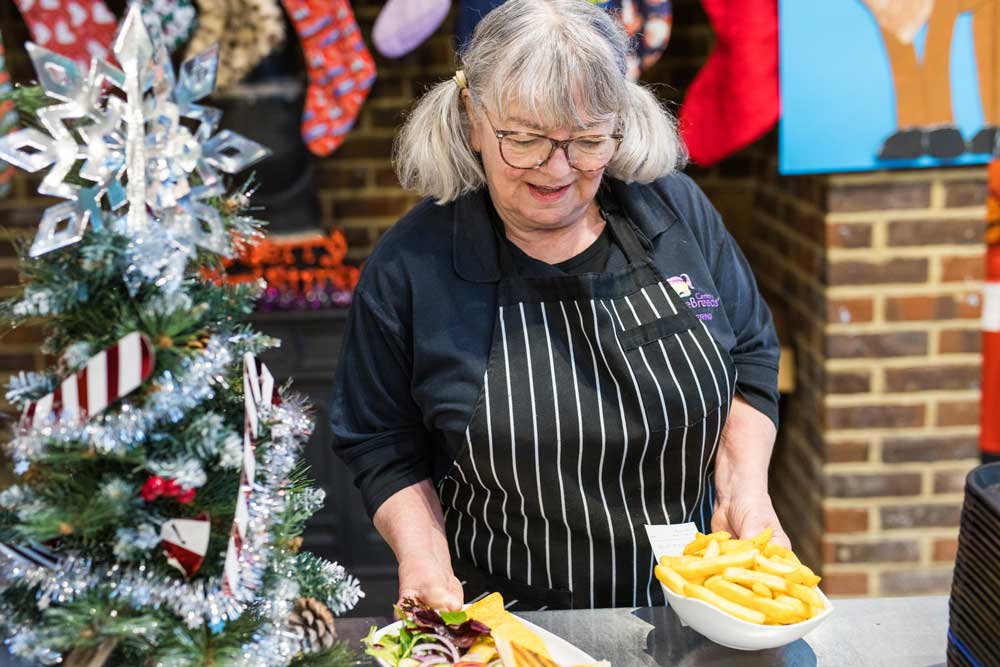
After your magical visit, unwind in the Granary Restaurant, where you can tuck into a festive turkey and cranberry panini, sip a gourmet coffee or hot chocolate. You can also treat yourself to one of our homemade Christmas bakes. It’s the perfect way to warm up and relax after your festive adventures.
Join us at the Rare Breeds Centre this Christmas for days filled with laughter, family fun, and unforgettable festive memories. Santa and his elves can’t wait to see you! Click the buttons below to find out more about this event and to purchase grotto tickets. Normal day tickets can still be purchased for theses days if you do not wish to see the Grotto show or meet Father Christmas.
Ruby Jubilee Festival
We have celebrations planned!
This year, we’re gearing up for a spectacular celebration for our 40th anniversary as a registered charity with a 3-day Ruby Jubilee music festival dreamed up by our supported people! It’s a tribute to the incredible innovations of our founding parents and supporters and the decades of dedication that have brought us here. To honour our 1985 roots, the Friday celebration will be 80s-themed. Your support in sponsoring or fundraising for this event means the world to everyone involved. Let’s come together to celebrate, laugh, and dance in honour of four decades of transformative work and our bright future ahead! Here’s what we hope to have:
Our wish list
Friday, 5th September
- An exclusive, 80s-themed private party for our supported individuals, their friends, family, staff, and supporters. Live music, dance sessions, face painting, COT videos and refreshments.
Saturday & Sunday, 6th & 7th September
- A vibrant family festival, bursting with live music – now featuring the Raver Tots and showing COT videos between sets.
Can you help us make this an unforgettable celebration?
Our supported peoples’ wish list for the Friday event includes live music, entertainers, a tethered hot air balloon, catering, bars, prizes, karaoke, and so much more!
Any donation you can contribute will bring us closer to turning this dream into a reality, and will be deeply appreciated by everyone at COT—especially the people we support.
How to contribute
- Contribute financially through our Donate page
- Download our Ruby Jubilee fundraising pack to help raise funds for us
- Download our corporate sponsorship pack to see how your organisation can be a featured sponsor at the event, online and in our email campaigns
* Fundraising, payments and donations will be processed and administered by the National Funding Scheme (Charity No: 1149800), operating as DONATE. Texts will be charged at your standard network rate. For Terms & Conditions, see www.easydonate.org.
It’s World Wildlife Conservation Day!
Wildlife and conservation news from the farm
The Rare Breeds Centre is primarily a farm attraction, however, with 100 acres of woodland, wildflower meadows and ponds, there is much more wildlife at our site than our visitors may realise. So, we asked our conservation officer to provide an update in celebration of World Wildlife Conservation Day!
As we approach winter, much is changing in the wild world, as the weather drops, and daylight closes in. Winter berries are appearing onsite, such as hawthorn, blackthorn, spindle and holly, which birds and mice will rely on in their search for protein-rich foods. Many animals will be growing their thick winter coats ready for the changing weather on our site – these animals prepared for the cold include badgers and polecats.
Getting ready for hibernation
It is time for the Kent Mammal Group to clean and close our dormouse boxes for the winter, as dormice head to the understory to hibernate under leaves and log piles. Other animals hibernating on our site include bats, such as the Daubenton’s bat and soprano pipistrelle which have previously been found on the site. Toads, frogs, great crested newts, smooth and palmate newts are all hibernating underneath rocks, in cracks and below the frost lines until spring; some great crested newts will even hibernate in the pond if conditions are perfect. Grass snakes, adders, lizards and slowworms will also join in the winter hibernation. Most butterflies and moths will also enter a dormant phase in the cold weather, similarly, the Butterfly Tunnel on our site is also shut down for the winter as they struggle to survive in the cold temperatures.
Bumblebee news
The Bumblebee Conservation Group have concluded their BeeWalks for the year, as the colonies die, and the new queens hibernate beneath the ground, ready to emerge next year and create a new colony. The BeeWalks occur once a month from March to October, when bumblebee activity is at its highest. Despite an overall decline in the UK bumblebee population, the Rare Breeds Centre site has still hosted a wide variety of species this summer, including Buff tailed bumblebees, Common carders, and the rare, Ruderal.
Fungus is among us!
All the autumn rain brought huge influxes of mushrooms of all kinds, from Turkey tails and Jelly ears to Sulphur tufts and Amanita. As we say goodbye to autumn and the winter rolls in, most fungi stop producing mushrooms but are very much still alive below the ground. The rain has also meant that ponds have filled back up, and streams around the site are flowing again after drying out in the summer months.
Preserving habitats
Winter is a great time of year to top up dead hedges after cutting back and clearing branches from the woodland floor. Hedges can be trimmed now that nesting season is over, and leaves swept from paths to prevent animals hibernating in areas where they may be harmed. The ground conditions in the woodlands will vary greatly over the winter months, with hard ground in the frosts, and much softer ground and mud when the frosts melt. Habitats will be carefully maintained and managed to ensure successful hibernation for our resident wildlife, and to ensure a suitable environment for emerging in spring.
If you visit the Rare Breeds Centre in the winter months and venture to the woodlands, be sure to be mindful of log piles and fallen leaves and keep an eye out for animals feeding on winter berries and sheltering from the wind.

Learn more about conservation on the farm
We work on conservation projects across the Rare Breeds Centre and Poulton Wood year-round.
